Misogynoir: The Silent Backbone of Hollywood
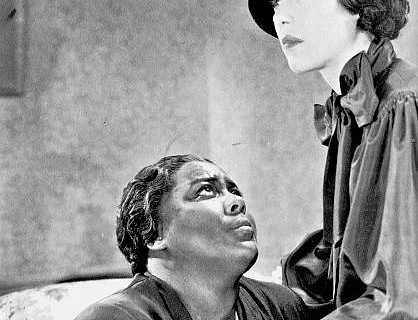
In filmography, there is arguably no other group by race or gender, that encounters misogynistic discrimination as much as black American actresses. To be clear, the practice of misogyny has been historically integrated into Hollywood in one form or another. For instance, the 1933 film, Female, features a wealthy woman, Allison Drake, as tough, lacks romanticism, and is promiscuous. She eventually agrees to marriage to one of her employees, Jim Thorne, and tells him he can run her firm and she will become a child-bearer. The patriarchy comes in the form of portraying the successful Allison Drake as first unloving and licentious, then molding her into this picturesque, stay-at-home mother that gives up her power position to be a good wife and produce nine babies. In numerology, the number nine is “perceived as a symbol of love and faith,” qualities that heretofore surpass female characteristics on screen and is in direct contrast to the rounded female who is successful, loving as well as motherly.

Correspondingly, the newly coined term, misogynoir—a form of contempt held by studio executives and casting companies against black women—is equally, if not more detrimental in practice than its counterpart, misogyny. This is not to be confused with the historical discrimination against black actresses that was already in place prior to Moya Bailey’s coining of the term. The word itself is unique because it puts a distinct name on a more thorough and deep-seated form of discrimination black actresses face. Essentially, misogynoir surpasses misogyny because black women in general, and black actresses in particular, deal with something known as dual identity status. In other words, they are discriminated against in the casting of films in two ways as they attempt to defy patriarchal stereotypes.
Strictly speaking, black women are oppressed twice based on the history of black oppression in America, such as the error of Jim Crow that continued to erase the contributions of black women; then, they are discriminated against based on the history of women oppression in America, such as “being viewed as witches”. Naturally, misogynoir is making its mark in film and academic discourse, adding another thread to the insidious acts of covert and aboveboard racism that has unified Hollywood’s power structure for decades.
“[Black] women who saw themselves as the future of their race but…have virtually disappeared from the historical record.”
Glenda Elizabeth Gilmore (source)
Accordingly, when exploring the racial history of Hollywood and the casting of black actresses in what would be considered positive roles, it is clear that this attempt has consistently been met with diffidence. Positive images, moreover, are those roles that are defined outside of the usual stereotypical roles that have been reserved for black actresses: out of shape, poor, wench (servant or some form of sex worker), uneducated, unmarried, ignorant slave or willing domestication participant. Thus, when discussing the casting of black actresses, separating reality from entertainment would be reckless. There are numerous reasons black women have been marginalized in film that stems from the overall effects of racism, classism, and colorism.
This can be seen in movies geared towards white audiences or those geared towards black audiences. For instance, the casting call for Straight Outta Compton (2015), has a racial hierarchy on the type of roles women play based on skin complexion, light skin or nonblack being offered the best roles and darker skin women and fully black were offered roles of poverty and sluggish. Moreover, these three –isms have the same underlying support of European-based patriarchal and misogynistic behavior. Yet, it is the continued historical categorizing, stereotypical terms that have been the underlying justification to cast black actresses in negative roles more often than not.
The Stereotypes
Black actresses are the victims of what may be irreversible stereotypes. Unfortunately for them, a stereotype is not simply this oversimplified image of a person, but more properly defined as this untamed force that not only threatens but is often successful in killing individuality. To illustrate this point, consider the following: if in 1930 a black actress was viewed by the power structure as globally unattractive, then in 2022, because of ritualistic racism, that same black actress is viewed in the same light, thus effecting casting calls despite exceptions. Conversely, the same does not hold true for a white woman. This general example is more of a paradigm that reflects Hollywood’s notorious casting design which clearly defines roles in which black actresses are qualified to play.
Thus, if Ariel’s audience recognizes her as white and beautiful, then the casting of Halle Bailey goes against those biased and erroneous beliefs, breaking one of the many codes of white supremacy. In this case, the ones that state that European standards of beauty are supreme and what is considered beauty, role model worthy, and culturally sacred or fairytalelike and hallowed, cannot be reserved for black actresses (The Little Mermaid, 2023). This individualizing is relevant to other groups, but more prominent within the group comprised of black American women, as nonblack are cast as black women—or the even more detrimental act, blackface—without facing the same racist backlash (see Judy Garland in the 1938 musical, Everybody Sing). Thus, being a black actress, an individual plagued by dual identity status, casting becomes just another tool that is used for marginalization purposes.
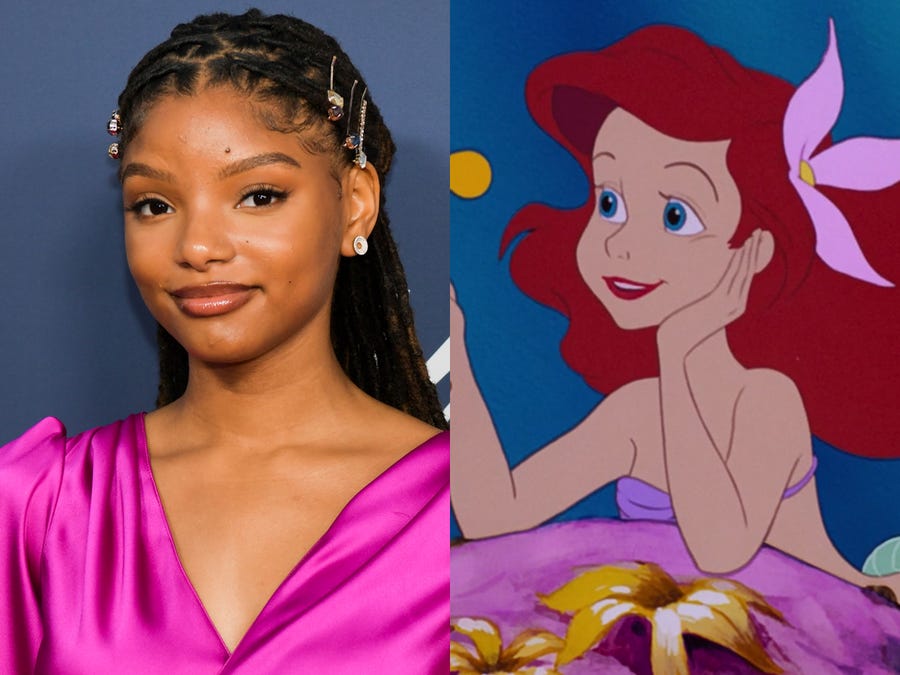
Accordingly, the stereotypes that plague black actresses are codependent on the term, androgyny. To be androgenous is in essence to not identify as male or female or to have both male and female characteristics. This is vital as Hollywood movies are notorious for casting black, dark skin women as rough, angry, or tough, which strips them of the female characteristics of softness and replaces those traits, in many instances, with male characteristics. Again, androgyny places strict restrictions on black actress roles and is very and discrepant and dual in nature. When looking at, for instance, current heroic movies, white actresses can be both strong and beautiful. Thus, androgyny is not attached to them in the same way as it is black actresses (see Super Girl, 2015). But, for a black actress, it is strained, typically one or the other, but not both (see The Equalizer, 2021, a role originally played by a Denzel Washington, a black male). Even Marvel Entertainment (parent company Walt Disney Studios), in the film Blade (1998), begins the series with a black actress, N’Bushe Wright, who the character Blade never recognizes as beautiful. Yet, in the sequels, there is a focus on the beauty of the white actress, Jessica Biel, who replaces Wright as the heroine in the series, by the protagonist in some form, even if it is just being more cordial.

Similarly, the word strong has become socially tied to black women in general, due in part, to some of the social restraints they have had to overcome. This includes enduring sexual abuse during slavery, being brave enough to birth and raise children during the antebellum and Jim Crow eras, and being the pawns of America’s war on poverty which helped usher in the single-parent household and the independent black woman, a phrase synonymous to androgyny. Furthermore, it is a tag that continues to be unshakable and one that continues to be constricted. The fact is, black women can be displayed as possessing strength and beauty simultaneously despite the fallacious narrative that says otherwise.
Another stereotypical role that is an endearment to the structure of Hollywood maintaining this skewed hierarchy of black actresses is domestication. These roles, to be sure, are what is seen in movies like The Help (2011) and Flowers in the Attic (2014), by-products of American slavery, Reconstruction, and Jim Crow. True enough, it would be reckless to deny the historicalness of these roles. Part of getting to point B is to endure point A. As such, for a black woman in America, in regular society as well as Hollywood, to be a doctor, they had to endure taking care of white families in a nanny or mammy role for multiple decades. Yet, it would be even more reckless to deny the subserviency these roles portray and how that image can have a negative impact on young black female viewers. It would also be reckless to assume that these historical roles are the only roles of black women with historical accuracy.
To illustrate this point, it took until 2016—for Hollywood to recognize NASA’s black women accurately in Hidden Figures (2016); yet, year after year, Hollywood has not failed to honor black women in compromising positions more than they have those in uncompromising positions. These negative roles show little black girls two very different directions. On one end of the spectrum, it exhibits that there is no hope but to work as a domestic in some form by taking care of rich white people; on the other end of the spectrum, it shows them unlimited potential within themselves, that they can be heroic, intelligent, and beautiful without compromising themselves. But again, the work that these black women did for NASA is considered heroic, and to portray it accurately and not in a Marvel-type, superhero fiction movie took time because the intelligence is in direct contrast to the next stereotype that inhibits black actresses—sexual object.
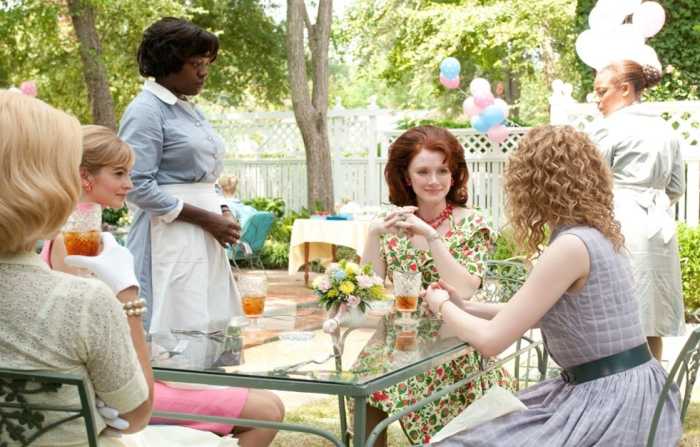
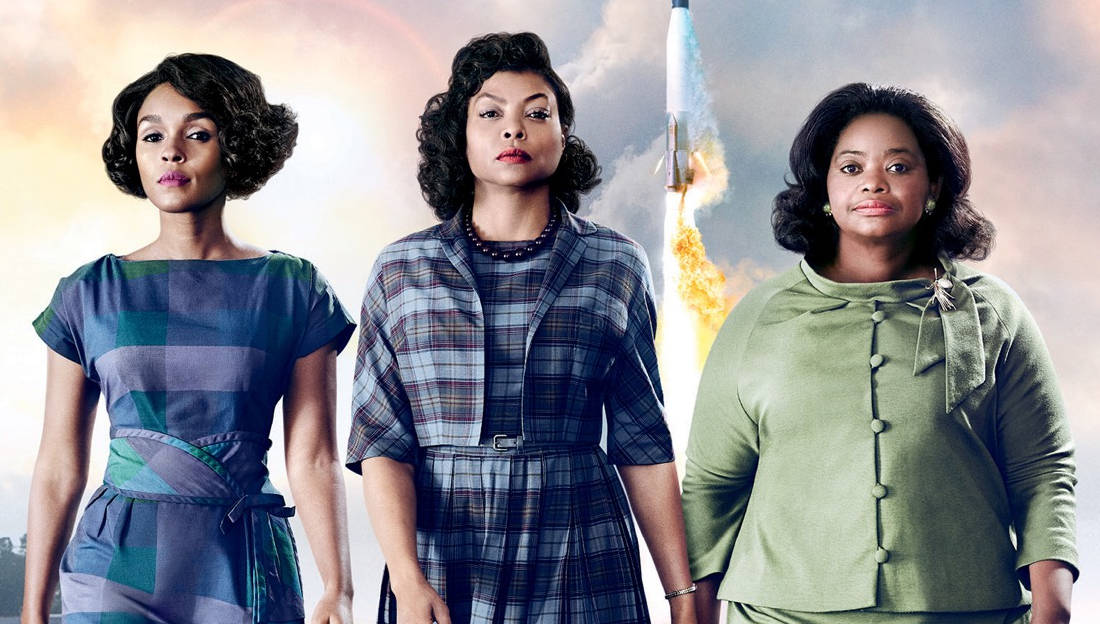
The sex object is one of those stereotypical terms that are loaded with possibilities. This term is connected to the idea of a black woman possessing a backside rather than a brain. The movie connection would be Halle Berry’s character, Leticia Musgrove, in Monster’s Ball (2001), who won an Oscar for arguably simply having an extended sex scene with a hillbilly sheriff responsible for the execution of Musgrove’s husband. If the history of colonialism and American racism is taken into account, the female, specifically the black female, has been portrayed as a codependent, sex object. If she is not a sex object, then she has little value to the power structure. This draws directly from slavery and sexual unions that occurred between slave owner’s and mixed slave women, a relationship that echoes the sugar daddy relationship. Even though Berry is half white, at one time, due to hypodescent, she would have been considered solely as black. The term, hypodescent, denoted that one drop of sub-Saharan African blood categorized a person as black, regardless of how little blackness actually coursed through their blood.
Of course, film critics, both professional and regular viewers, have different opinions, but it would seem more likely that Berry gain the type of accolades from Monster’s Ball in a movie that almost leaned on her acting solely to be great, such as Gothika (2003), where the accolades are not as near as extensive as Monster’s Ball, memorable because of its sex act. The difference in the two films is that Berry is not cast into a stereotypical role in Gothika, but as a renowned, married, well-to-do psychiatrist who is also lusted after by her white co-star, Dr. Pete Graham (Robert Downey Jr.) but never gives into to his temptation.
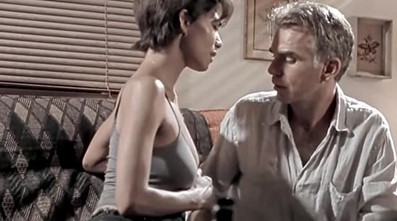
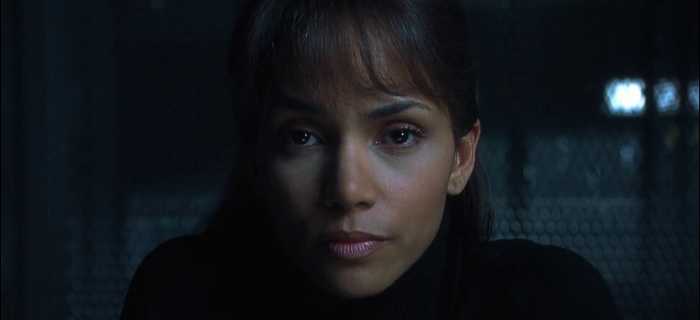
Accordingly, it would seem fitting that a black actress is cast in a role as Super Girl using this matrix because part of it is to sell sex and to show females as tough. Yet, this is the ultimate conundrum. Black actresses are sex objects insofar as it demeans them, not in regard to being recognized as an appealing heroine in a superhero role, or in a fairytale role. They are tough insofar as to seem androgynous, not to be cast in sci-fi roles where society is dependent upon them for survival or in fairytale roles that are like holy crosses to a segment of white viewers.
Finally, the uneducated stereotype of black women distorts a positive view of them by casting companies. To illustrate, one can look at the actress, Monique, in Precious (2009), who plays an uneducated, uncouth mother. Resultingly, the film was awarded with accolades from the white power structures, such as The Golden Globe Awards and the 2009 Screen Actor Guild Awards. Being cast in stale roles like domestication, sex objects, or uneducated fools are considered as safe roles to prejudiced viewers and casting companies. Likewise, the continued making of slave or poverty-stricken movies that tend to remind those entrenched in racism of a time when blacks knew space and place, remain popular with biased white audiences. These are the roles that black women usually have to play in order to gain notoriety and not garner racist backlash.
Ultimately, these damaging terms—androgyny, domestication, sexual object, and uneducated—help form an inaccurate identity of black actresses as a whole. Roles like a black Annie are typically frowned upon by the bigoted viewer (see Annie 2014). This impressive remake received an approval rating of only 28% on Rotten Tomatoes, and one can assume that the ratings may have more to do with the casting of Annie than it does with the film itself. To compare, Precious has a 92% approval rating on Rotten Tomatoes. Correspondingly, the satirical journal, The Onion, wrote in a tweet that Quvenzhané Wallis, who played Annie, was a “cunt,” notwithstanding the fact that Wallis was only 12 at the time. This, to be clear, is not based on satire, but on a deep-seated hatred that she was cast as this white, fictionalized historical figure.

It then becomes important that black women be cast in diverse roles and that these stereotypes be broken. Even though companies like Disney claim diversity, it is rooted in white or sub-white uniformity. The cultural spectrum of black people in and of itself may be the most diverse the world will ever see. The term black, then, cannot just mean black American women, but anyone of African descent. This means that black actresses exist in America, Europe, Africa, Latin America, in Asian countries, and Canadians, whether these groups self-identify as black or not.
If a black English actress can play a black American woman, which would be considered diverse in some respects, then the same should be true in turn. If a white actress can play an Egyptian pharaoh, then a black actress should be able to return the favor. Therefore, it should not be difficult to insert this into film casting. It should also not be a shock that Leah Jeffries was recently cast as Annabeth in the upcoming Percy Jackson series on Disney when even the author acknowledges that the casting company got it right for once. This does not mean that black women heretofore should only be cast in roles that make them look good, but that their uniqueness and range should be considered. It also means that the accolades should be based on the performance rather than just the role itself.

Tokenism in Casting
Yet, this diversity also has to come without tokenism—the symbolic effort to right a wrong by using a black actress in a film with little to no other black support who is either cast a stereotype or is culturally different from what is recognized as being black. Tokenism does not solve problems; it only creates more backlash from not only those from the outraged white portion of viewers, but then outrages many black viewers for the symbolic portrayal. Meagan Good has two roles that seem token, Saw V (2008) and The Unborn (2009). Many black viewers regarded these roles as a feeble attempt at diversifying films that lacked diversity but at the same time did not require diversity. Hollywood cannot put out fire with another form of fire.
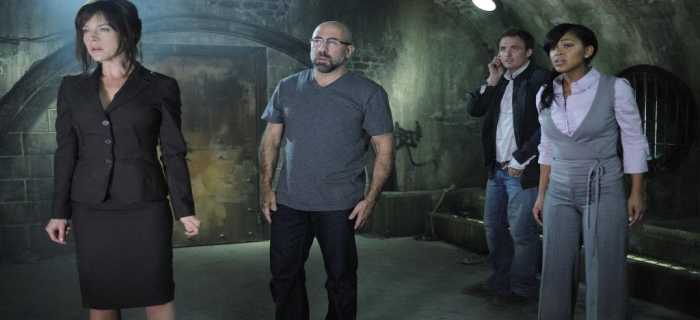
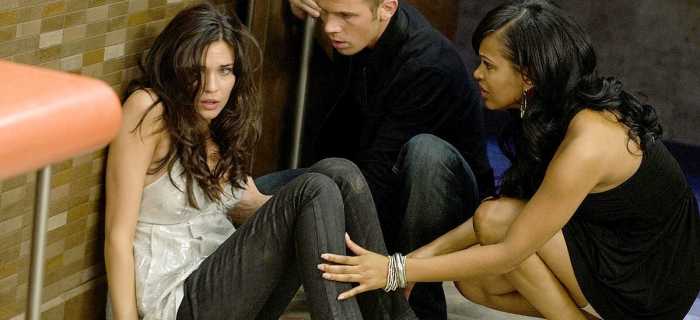
Ultimately, the problem is if the group of racist backlash viewers are willing to simply enjoy movies based on their quality and leave bigotry out when it does not benefit their cultural story.
What do you think? Leave a comment.










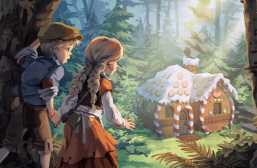
I think the better comparison point for Blade would’ve been in the second movie where we are more familiar with Blade and as such his sympathies for the white vampire heiress that serves as his first and really only love interest in the franchise.
I believe your do a good job in introducing the intra-racial dialogue, though with the audience of this website I do worry about the general absence of how dark-skinned males, boys, and queers are often portrayed and the histories of anti-Blackness as a universality in film and media in the west is definitely an area of interest for me.
I believe Blade has enough familiarity in part one. Part Two or Three would not exist if there is no familiarity in Blade (One). The point being made is how he only has a love interest or true emotions when presented with a nonblack ‘partner,’ which I highlight.
Misogynoir is a dislike for black women. Thus, it would be inadequate to write about males or queers. The question I was presented specifically defined gender roles.
While I am always open to criticism, I do think much of your response would be for a different topic/question.
That is a very fair point. I was speaking more so for possible future projects and I have a tendency to speak ahead of myself.
I apologize for that.
With the Blade section, I may need to reread, because I didn’t “get” that from your text.
No need to apologize. Your comment wasn’t offensive and if mine sounded harsh, it wasn’t. I only wanted to respond to your points and clarify my position.
Shared article with friends. We wont stop talking about it until black women stops being the most neglected people, get out of your privileges and understand intersectionality.
Thank you for sharing. It is very tiresome to watch movies with the same stereotypes being portrayed year after year.
What to me is downright annoying is that black women are always portrayed as ‘strong’, ‘proud’ and ‘powerful’ in the media. Whether it’s in sports or in fashion or whatever. What is up with that? I feel sorry for the puny, petite, shy black women. White women can be anything, personality and body-wise. Seems that black women are appreciated only if they live up to the stereotype.
The ‘sassy’ black friend or employee is a stereotype in US shows that I find annoying, though I guess it has it’s equivalent with other stereotypes.
“Misogynoir”. Sounds like the name of a twerking hip-hop artiste.
Nice try at sarcasm but it failed. You can’t explain in your wildest dream how you draw the connection besides bigotry. And btw, it’s Hip Hop with two capital h’s.
Naming something isn’t the same as dealing with it but having the language for something certainly makes it easier to address.
My fear: I’m not sure anybody will use this word to address the problem – it’s too Buzzfeedy. People are mostly going to use the word to win likes on Facebook. And then nobody does the hard work needed to fix anything. They just hope that tweeting is the same as waving a magic wand.
Intelligent people are spending more time coming up with cool words than solutions.
And dumb people like me are spending more time complaining about cool words than coming up with solutions as well!
Touche
“Misogynoir” is a funky word!
Definitely!!!!!!!!!
Whatever happened to “colour-blind casting”, or is that a one-way street no-one treads any more?
That argument would be valid if there wasn’t a consistent pattern in Hollywood spanning many decades where roles or characters have been acted or taken over by white actors. Why doesn’t color-blind casting work in reverse? Where top and lead roles originated as white but were then changed for an black actors?
If you’re black in the film industry or just a fan, it’s difficult to swallow the old color-blind casting trope when you know and see black roles being remade for white actors. That’s the one street in reality.
Blacks have been under-represented in movies and tv–and that under-representation is deepened by having the meager number of black-based roles ALSO been taken by white actors. It’s not strictly about having a hard and fast rule about ethnic casting. But you can’t go on about color-blind casting when it’s vastly benefited one color!
Good read. And it’s a shame that actors of the ethnicity of the original work aren’t getting the roles.
Investors are more likely to invest in films with white actors, and preferably when white actors play non white roles. That is the depths of racism in this world. Black culture is very influential, everyone makes money from black culture, music, art, style, fashion and language. Bernie Mac wasn’t far off when he said “everyone wants to black, but no one wants to be black” – he didn’t mean it literally, he meant everyone wants a piece of the very lucrative culture, yet wants little to do the purveyors of the culture.
People want to see themselves represented in movies, it’s as simple as that. If you’re black/asian/latino/gay/physically disabled and you never see a character like yourself or, worse still, you’re always the villian, then you’re going to get a bit cheesed off.
Tell me about it. I’ve yet to see a Hollywood movie where the hero is a bald Brummie who works in the exciting world of change management.
There’s a minority white subset that has lots of influence in Hollywood. Unfortunately many of them talk about diversity and fund various diversity oriented organizations but practice what could only be called racism. When you get behind the camera it’s even less diverse than on screen. Definitely not a reflection of the US population and especially not a reflection of Los Angeles. I know as I’ve worked in showbiz for over 35 years and have seen this with my own eyes.
It was about 35 years ago I stopped watching tv on a regular basis.
The problem is with the end product. Dropping a few minorities into a show doesn’t make much of a difference as most stories are retreads (I do realize shows are just a way of getting viewers to sit through commercials).
Maybe the real fix is for more production companies to leave Hollywood… for good.
As a black woman studying and eventually working in Europe + UK, I have been subjected to a lot of racism, mostly from white women. In my opinion, white women are more racist than the men where black women are concerned. Studying for over eight years in a profession where there are more white men than women, especially at the top, I had been able to work hard to get to the top, and I can’t say I had much problems from the white men. Almost all my problems came from the white women.
That’s because they are are petty and jealous.
I recall as a child and teenager watching cowboy films where the native Americans were played by white actors, Jesus was depicted on screen by white men, and of course we had the black and white minstrels for fucks sake. We have come a long way but not long enough.
Black women do get unfairly treated. Not sure what we can do about it.
I remember an article about a luxury German car brand. The top brass in their US division were concerned that too many African American women were driving their cars. They were worried the car would be associated with them and would devalue that model.
Thank goodness, africans, chineese, german, french, black, white or other can now play staring roles and speak as they speak in films, especially historical bi-pics and historical films in their own ways. No more choclate paste smeared on famous white folks. No more silly false accents (french German etc) And hopefull no more “Renee Zelwotsit” playing the part of proper English Ladies and hopefully we see older craggier faces. Mis-shaped bodies raning from bulemic right up to Super super sizes that currently defy medical discriptions.
I lived in LA for six months and quickly noticed that that as a non-Hispanic white I was in the minority. TV shows set in LA like to pretend otherwise. In TV land whites are still in control. I lived In an area which was predominantly Asian. Hollywood must have a good commercial reason for doing this.
Nothing will change, not since John Wayne played …Genghis Kahn.
Every social change in history; from the suffragettes to the black lives matter movement started with one person saying ‘enough’.
Really good read, thank you for coving this topic.
Thank you and you’re welcome.
This sort of intersection creates a space where imposter syndrome thrives. And black women feel the need to over compensate by being overly nice overly forgiving overly everything to not be accepted
Yes, I tried explaining this to my white boyfriend that this has caused me to be overly-agreeable and he was confused on how. This here is what I’m talking about, and Even as a half black woman, I experience this.
I am a black female who is of spanish ancestry (cuban) and my experience with misogynoir was terrible and i didn’t let that bother me i learned how to ignore it and i don’t deal with it anymore, but however it is sad that it exists and black women are not ugly, it is not ok for other races of women to get privileged because idiots think we are naturally unattractive, or just have a bad attitude people should shut the hell up and realize we are human too. I am sick and tired of black women who are educated being put down for sounding proper (white) and there is no such thing as talking white.
Such a great and important conversation. The writers of The Artifice have already been one step ahead.
Thank you for this post. It raises awareness and shows where our focus should be.
A good piece, well written.
This article raises awareness for black women not just in America but in other countries as well. The report can open a discussion of what it is like for women of African descent — whether they identify as one or not– to play demeaning roles and have misogynoir.
Amazing article! I truly learned a lot.
Lovely article and as always, thought-provoking. Thank you for going into so many stereotypes, and for defining “stereotype” not just as oversimplification, but a killer of individuality. (May I borrow that)?
At last, someone wrote about tokenism in casting. Danke. That was important. Beautiful article. Essential details. In a couple of weeks, hope, I will publish an article about stereotypes in Hollywood’s Golden Age. People need to see/read how formidable was being so-called different back then. Thank you again.
However, I would like to point out that Black women are erased by White women as well both on and off screen. Moreover, in the colonial sense the male “other” has also been emasculated so that we are all women. Somehow, the only men are white males of European descent. However, the point at issue is the erasure of Black women and White women have historically been complicit in their erasure.
You should check out actress Louise Beavers in the 1939 film Reform School, a Black-cast film intended for a segregated Black audience. It is interesting to watch Beavers’ commanding presence in this film as a progressive probation officer and contrast her authoritative performance with her basically supportive, stereotyped roles in mainstream classics like Imitation of Life or Mr. Blandings Builds His Dream House
I know you are looking at very contemporary films and I enjoyed your insights. Wonder if you have ever looked into the early silent film era – it is kind of surprising but there were more roles for all women then, behind and in front of the camera. There is a filmmaker named Alice Guy-Blaché who even made films with mixed race casts in the very early days, like 1900 and 1910’s. And, there were black women filmmakers. Check out Tressie Souders and Zora Neale Hurston – both among the earliest (if not the first) black female filmmakers. My point being that they did not create the same stereotypical images/stories, and some even made what were called “race films.” Then the studios took over and created this narrative you describe. But if you are interested in this field you might want to go to the way-back past to see what was happening before films were corporatized.
it’s interesting to think that a whole African American film industry developed in parallel to ‘traditional’ Hollywood in order to combat harmful stereotyping of black people in movies.